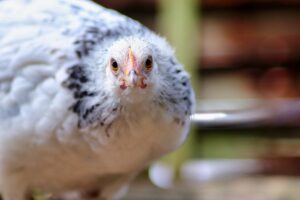Ever feel like you’re constantly cleaning your chicken coop? Like, you just finished scraping the floor, and forty seconds later, your feathered friends have turned it into a complete wreck? Enter the Deep Litter Method—the ultimate hack for natural coop solutions that will save you time, keep your chickens comfy, and even boost your garden game.
Think of deep littering as the composting of your chicken coop floor. It’s less mess and more magic, helping you manage your coop with less stress. Want to know how it all works? Let’s break it down.
What Is the Deep Litter Method?
The Deep Litter Method (cue spotlight) is a natural way to manage waste in your chicken coop. Instead of fully cleaning out the bedding every week (ugh, no one has time for that), you layer fresh bedding materials—like wood shavings or straw—on top of the soiled ones. Over time, this turns into compost, right there on your coop floor.
Sounds gross? Maybe… but trust me, it’s not! Bacteria break down the waste and bedding into rich, organic material. And don’t worry—when done properly, it doesn’t smell bad. (Smelly coop? Then we need to tweak something. More on that later.)
Think of it as letting nature do the cleaning for you. Pretty brilliant, right?
Why Choose the Deep Litter Method?
Wondering if this is the right fit for your flock? Here are some clear benefits:
1. Less Cleaning
Say goodbye to the back-breaking task of weekly deep cleanings. With the Deep Litter Method, you’ll only need to fully clean the coop every six months or so. Yes, SIX months. Cue happy chicken keeper dance.
2. Warmer Coop in Winter
The composting process releases heat, making the coop naturally warmer for your chickens during chilly months. No need for fancy heaters (just happy, toasty chickens).
3. Eco-Friendly Fertilizer
When you do clean it out, what you’re left with is compost gold. This rich material is perfect for your garden—your plants will thank you for it. Plus, it’s a great way to recycle chicken waste instead of throwing it out. 🌱
4. Happier Chickens
Chickens love to scratch around. The constant addition of fresh bedding keeps their environment fun, fluffy, and engaging.
5. More Sustainable
Deep littering aligns perfectly with the idea of natural coop solutions. You’re working with nature, not against it, to manage waste efficiently.
Convinced yet? Great—time to learn how to get started!
How to Set Up the Deep Litter Method
The beauty of the Deep Litter Method is how simple it is. But there’s a step-by-step process to make sure everything runs smoothly (and stink-free).
Step 1: Start With a Clean Coop
Yes, ironically, you’ll want to begin with a clean slate. Remove all the old bedding and give your coop a solid scrub down. This ensures you’re starting with the right foundation for composting success.
Step 2: Lay Down Fresh Bedding
Spread a thick layer of bedding material—4–6 inches deep. Good options include wood shavings, straw, or dried grass. Avoid newspaper or anything that mats down easily—that’s a composting roadblock.
Step 3: Add Your Chickens
Once the new bedding is in place, invite the flock back in. Trust me, they’ll LOVE scratching and fluffing it up.
Step 4: Layer It On
Once you notice poop accumulations (we’ve all been there), toss in a fresh layer of bedding. That’s it. This new layer keeps things fresh—and starts that sweet composting action.
Step 5: Stir Things Up
Every few weeks, mix the bedding around with a rake. This aerates the materials and helps everything break down better. Bonus? Chickens love helping with this part, too.
Step 6: Keep an Eye on Moisture and Smells
The key to a successful deep litter system is balance. It shouldn’t be too wet (or hello, ammonia smell), nor too dry. If it gets stinky, add more bedding or turn the pile for better airflow. And if it’s getting too damp, toss in some dry bedding to balance things out.
Step 7: Harvest the Compost
After 6 months (or whenever it seems time), remove the bedding and marvel at your black-gold compost! Your garden veggies, flowers, or even your house plants will thrive with the nutrient boost.
Pro-tip? Don’t use it directly on plants until it’s full compost. Give it a little more time to break down outside the coop first.
Tips for Deep Litter Method Success
- Choose the Right Bedding: Wood shavings tend to work best. They absorb odors and compost beautifully.
- Ventilate Your Coop: Good airflow is key. It prevents odors and keeps moisture levels low.
- Size Matters: This works better in larger coops where chickens aren’t overcrowded. More space = better results.
- Start in Fall: Composting heat is a bonus in winter—but might not be ideal for summer in hotter climates.
Oh, and one more thing—if your chickens look extra smug, it’s probably because they know they’re living in a “luxury” low-maintenance coop.
Why Natural Coop Solutions Like This Are a Game-Changer
Switching to the Deep Litter Method isn’t just about saving time (though that’s a huge win). It’s about taking a low-maintenance, eco-friendly approach that’s better for your chickens, your garden, AND your sanity. With less frequent cleanouts, a warmer coop in winter, and compost ready to go, it’s a win-win-win all around.
And honestly? It’s a little fascinating to watch the natural composting process in action.
Time to Transform Your Chicken Coop
Still shoveling out your coop every weekend? Give the Deep Litter Method a shot. It’s low-maintenance, cost-effective, and one of the best ways to turn your chicken’s messy habits into a productive, natural coop solution.
Your chickens—and your garden—will thank you. 🐓🌱
Got questions or tips of your own? Drop them in the comments! Better yet, post a photo of your happy flock on their freshly fluffed bedding. We’d love to see your coop transformation!
For more check out my other chicken articles:
Navigating Chicken Zoning Laws
Chicken Respiratory Infections: Herbal Options
Fermenting Herbs for Chicken Gut Health
Chicken Foraging and Free Ranging
Best Chicken Breeds for Egg Laying
Safely Introducing New Hens to Your Flock

